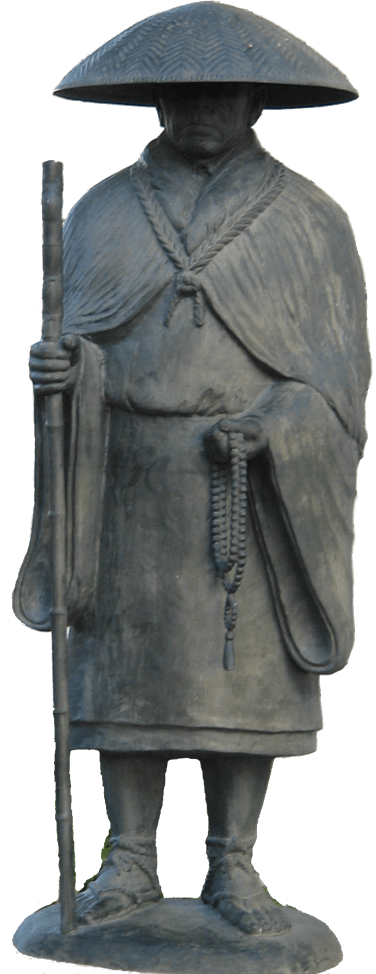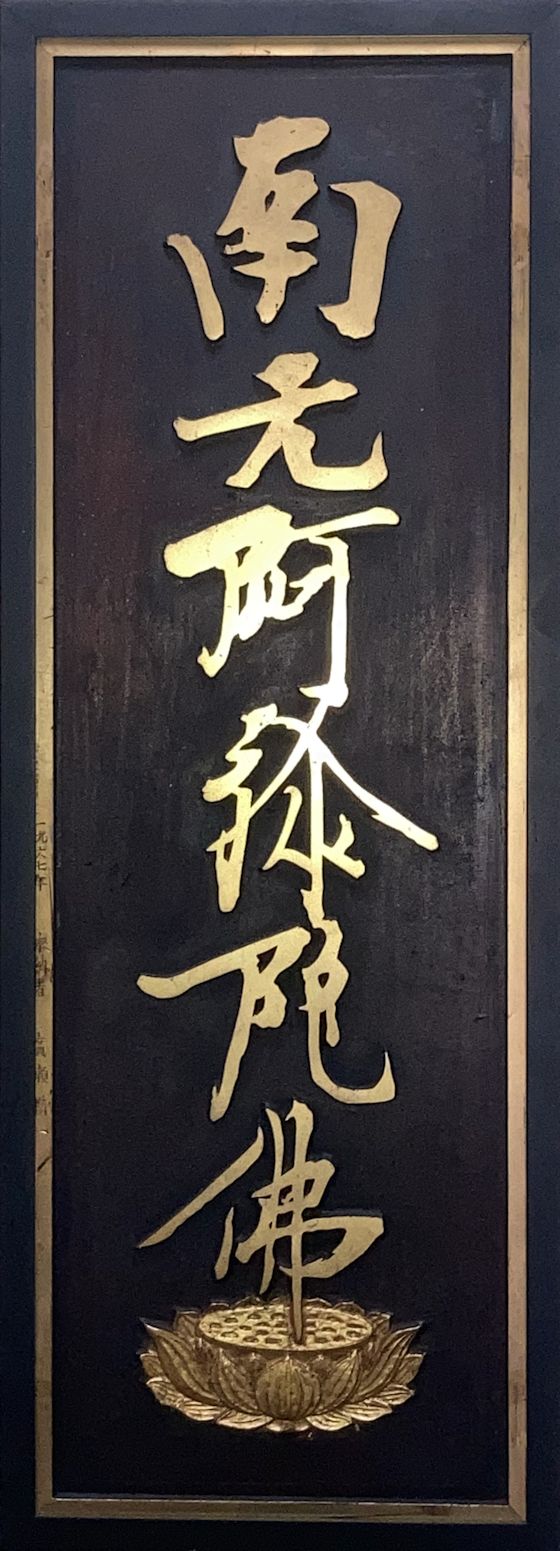Jodo Shinshu Buddhism
The True Essense of the Pure Land Teaching
A SHORT HISTORY OF JODO SHINSHU
Jodo Shinshu belongs to the Mahayana or North and East-Asian tradition of Buddhism. The other great tradition is the Theravada or South and Southeast Asian tradition. Within the Mahayana tradition, Jodo Shinshu may be distinguished from all the other schools by its rejection of all specific practices which are thought to lead to Bodhi (awakening), labeling them as ego-centered self-power.
Jodo Shinshu means the “True Essence of the Pure Land Teaching” as well as the “Sect of the True Pure Land Teaching”. Its founder is Shinran Shonin (1173-1263 AD) who was ordained in Kyoto as a Tendai monk at the age of nine. For the next twenty years, he lived the life of a monk on Mt. Hiei, the great Tendai monastic complex to the north-east of the city of Kyoto. There he spent the next twenty years in sincere study and meditation but despaired of not getting any closer to Bodhi. Discouraged by his non-progress on the Buddhist path, and by the corruption of the monastic communities, he left Mt. Hiei and descended to the city of Kyoto. It was here that he met the monk Honen and was led to the Nembutsu teaching.
As the Nembutsu teaching spread, it was condemned by the established religious authorities who succeeded in having Honen and many of his disciples, including Shinran, defrocked and sent into exile. During his period of exile, Shinran was to preach among the common people in the remote provinces. In his later years, he returned to Kyoto to study and write while corresponding with his many followers in the provinces. Shinran died in Kyoto in 1263AD at the age of eighty.
ABOUT JODO SHINSHU
Since his death, the Jodo Shinshu Sect that developed around his teachings divided into ten schools, the two largest of which are headed by blood descendants of Shinran. These two are the Jodo Shinshu Hongwanjiha or Nishihongwanji, and the Shinshu Ohtani-ha or Higashi Hongwanji.


Jodo Shinshu belongs to the Mahayana or North and East-Asian tradition of Buddhism. The other great tradition is the Theravada or South and Southeast Asian tradition. Within the Mahayana tradition, Jodo Shinshu may be distinguished from all the other schools by its rejection of all specific practices which are thought to lead to Bodhi (awakening), labeling them as ego-centered self-power.
Jodo Shinshu means the “True Essence of the Pure Land Teaching” as well as the “Sect of the True Pure Land Teaching”. Its founder is Shinran Shonin (1173-1263 AD) who was ordained in Kyoto as a Tendai monk at the age of nine. For the next twenty years, he lived the life of a monk on Mt. Hiei, the great Tendai monastic complex to the north-east of the city of Kyoto. There he spent the next twenty years in sincere study and meditation but despaired of not getting any closer to Bodhi. Discouraged by his non-progress on the Buddhist path, and by the corruption of the monastic communities, he left Mt. Hiei and descended to the city of Kyoto. It was here that he met the monk Honen and was led to the Nembutsu teaching.
As the Nembutsu teaching spread, it was condemned by the established religious authorities who succeeded in having Honen and many of his disciples, including Shinran, defrocked and sent into exile. During his period of exile, Shinran was to preach among the common people in the remote provinces. In his later years, he returned to Kyoto to study and write while corresponding with his many followers in the provinces. Shinran died in Kyoto in 1263AD at the age of eighty.

In Buddhism, how we see ourselves and the world is said to be warped by an instinctive self-centeredness, a self-centeredness which clouds our vision of things and misdirects our understanding of them. Shinjin (true-mind) in Jodo Shinshu is not to see clearly but rather to see this situation clearly. Further, this awakening is not arrived at through vigorous self-discipline and meditative austerities. Mustering the forces of a self-centered being cannot lead to non-self-centeredness. In other words, self-power leads to increased self-centeredness. Against this, is the “other” power of reality and truth which is ignored so long as the self reigns supreme. This Other Power surrounds and sustains us in spite of our ignorance of it. One becomes aware of Other Power as one becomes aware of Self-Power and can thereby let go of it.
 This Truth-Reality called Other Power is ineffable and beyond description. It is beyond shape and form and beyond categories of time and space – and yet, it is expressed in human terms by an anthropomorphic image called Amida Buddha, or the more abstract formulation of “Namoamidabutsu” in Chinese characters. This is the Nembutsu which literally means “I take refuge in the Buddha Amida”. It is not a mantra, but the name of the working of Truth-Reality.
This Truth-Reality called Other Power is ineffable and beyond description. It is beyond shape and form and beyond categories of time and space – and yet, it is expressed in human terms by an anthropomorphic image called Amida Buddha, or the more abstract formulation of “Namoamidabutsu” in Chinese characters. This is the Nembutsu which literally means “I take refuge in the Buddha Amida”. It is not a mantra, but the name of the working of Truth-Reality.
The Truth-Reality called Amida Buddha then, is the central object of veneration in Jodo Shinshu temples. This definition of Buddha is not to be confused with the other definition of Buddha as a human being who realizes or experiences this Truth-Reality. Shakyamuni Buddha is thus a human being who realized or experienced the Truth-Reality called Amida Buddha.
The Pure Land (Jodo) is the land, state, condition in which Truth resides. It is thus the land in the past and in the future, as well as in the here and now – that is infinite in time and space. It is again paradoxically expressed in spatial terms as located in the West, although “west” indicates no place but a direction. In Buddhist imagery, the direction west, the direction of the setting sun, is connected to the color red and the condition of meditation. The Pure Land is more often referred to in Japanese as “Gokuraku” or the condition of being “extremely at ease”, a basic characteristic of Bodhi.
Jodo Shinshu also means “the true meaning of the Pure Land teaching”, in which case it refers to Shinran Shonin’s interpretation of the Pure Land tradition of Buddhism, since Shinran himself had no thought of establishing a separate sect of Buddhism.
